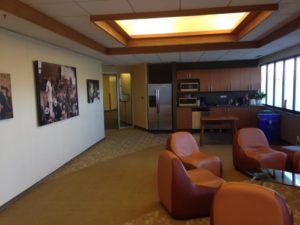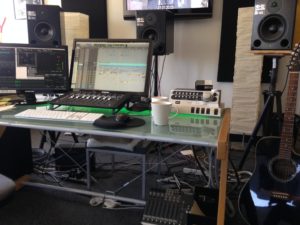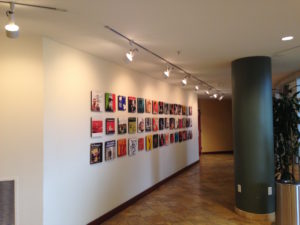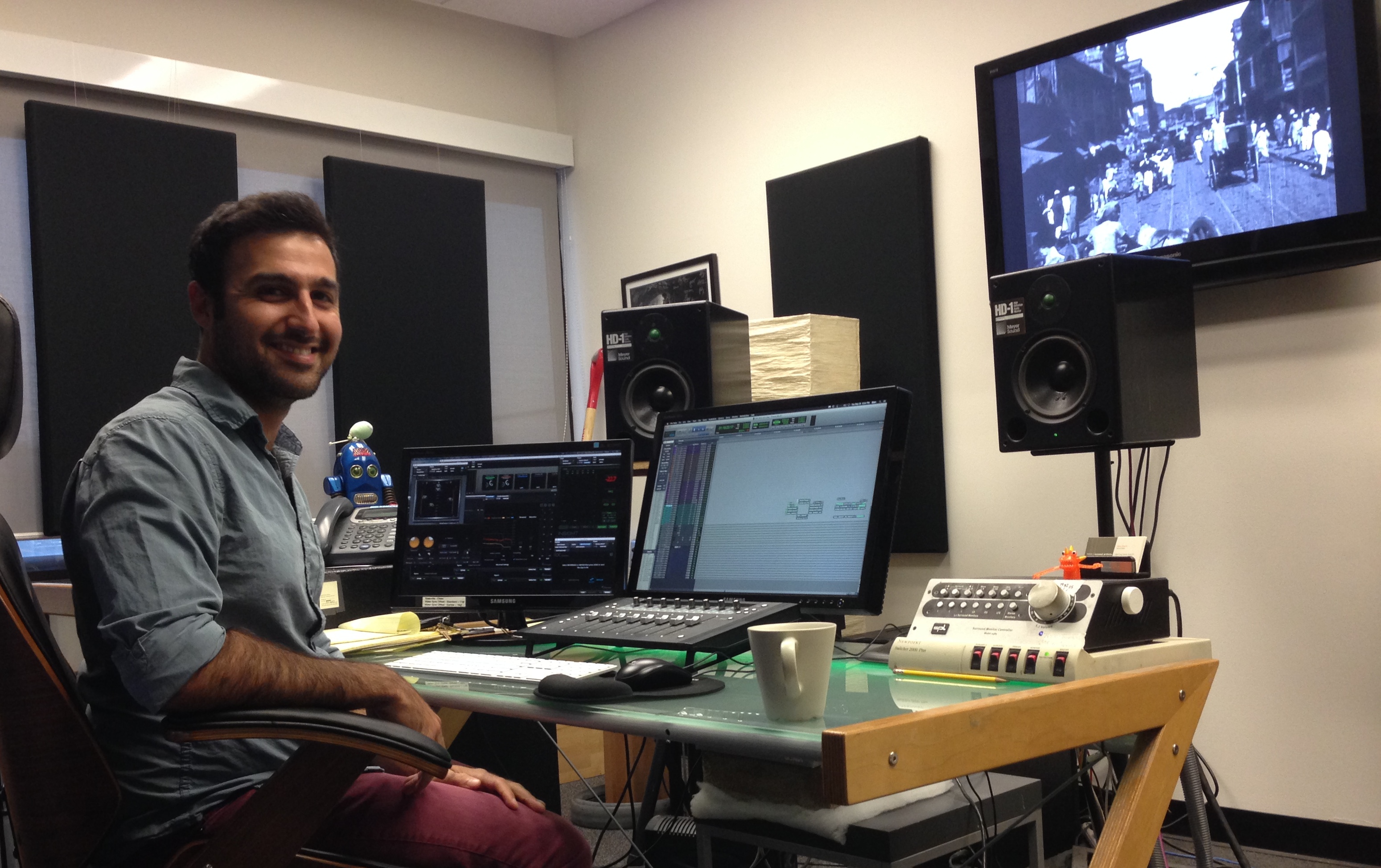The topic this month is LoFi and I know just who to turn to, Bijan Sharifi from Berkeley Sound Artists. Bijan has worked on many films of various styles, but has focused a lot of time on documentaries. With over 75 films under his belt, he knows how to get the right LoFi sound when he needs it.
DS: Hi Bijan and thanks for joining us. Can you tell us a little about your background and how you got your start doing sound for films?
BS: Yeah, thanks for having me! My background is in music. I started in college, recording my own bands and my friend’s bands. I eventually went to school for sound at Full Sail University, and the whole point was to get into recording music at studios. But once I got to Full Sail, the curriculum expanded my mind and awareness to live sound, sound for film, sound for video games, interactive installations, and all things audio. I had a class in film sound and I found it really intriguing, but I was pretty intimidated. It wasn’t until I actually edited and mixed a short film by myself for the first time that I really realized how fun it was. It was that feeling of honing in every detail and investing your whole heart into every sound; it really got me hooked. One thing led to another and now I’m doing audio post for film most of the time. I also do mixing and mastering for music on my free days.
 DS: How did you make the transition from doing music to working at Berkeley Sound Artists?
DS: How did you make the transition from doing music to working at Berkeley Sound Artists?
BS: The transition kind of happened from various schedule demands, where I was mostly doing freelance music production and sound design for theater at the time. I got a part time job here [at Berkeley Sound Artists] doing sound effects and some maintenance tasks. Over the course of a year or so, one thing led to another and I started doing all sorts of audio work here, so BSA turned into more of a full time job. As film work demanded more of my time, I enjoyed learning from so many journalists and documentary filmmakers. I realized what a powerful education tool film is and this really spoke to me. Soon after that I became the sound designer on projects and started mixing films for clients. I still do music work, but it’s mostly on weekends and days off where I can fit it in – which is nice because I can be more choosy, and work with artists that are close friends and that I’m really passionate about.
DS: The topic for the month is LoFi. Can you tell us some instances where you might want to make something sound more LoFi?
 BS: Yeah, definitely. In film, the whole point of the audio mix is to make a film sound cohesive, immersive, and powerful. Sometimes that means distressing the audio for an entire scene. For example, if it’s an archival piece of footage and it was filmed in the early 1900’s when there was no sound, sometimes we have to recreate the sound effects for that footage to give it some life and keep the energy going. Then I will process that audio to make it sound old and vintage as if it was authentic to the scene.
BS: Yeah, definitely. In film, the whole point of the audio mix is to make a film sound cohesive, immersive, and powerful. Sometimes that means distressing the audio for an entire scene. For example, if it’s an archival piece of footage and it was filmed in the early 1900’s when there was no sound, sometimes we have to recreate the sound effects for that footage to give it some life and keep the energy going. Then I will process that audio to make it sound old and vintage as if it was authentic to the scene.
Another instance where I would make something sound more LoFi, would be to treat a piece of music as though it were source music. I’ll take a music file and run it through a boombox or a little portable radio and record that back in, or I may do that with a plugin. Sometimes we use futzbox or speakerphone to make a piece of music sound like it’s coming through a laptop speaker or a little clock radio, or whatever the scene calls for. So we’re reducing it’s fidelity and maybe giving it a little room reverb, to make it sound like it’s diegetic in the scene, like source audio.
In other cases, I’ll use a LoFi approach to make something sound like a memory, or a recollection. Sometimes an effective technique is to make something sound slightly vintage or distressed, and then run it through a long reverb or delay to give it some dreamy texture. So essentially you’re distressing and blurring quality of the audio to make it sound like it’s someone’s memory.
DS: Can you explain what archival footage is and why it can sound pretty LoFi when it gets to you?
 BS: Essentially, archival footage would be any film media that was filmed in the past that is now being repurposed in a new film to tell a story or illustrate a point. In many cases, archival footage was made using older technology formats and can sound very vintage or sonically degraded. Perhaps there’s not a lot of frequency content in the original recording, or sometimes vintage recordings are very hissy and have a very loud noise floor. Other times we might get a clip of a news segment that a documentary is using in their film. In this case, the broadcast network has already processed the audio with noise reduction and compression on their end and it may sound pretty degraded by the time it comes to us. The goal with archival footage is to make the audio sonically match the visual media. So, in some cases we further degrade the original audio to do this, and in others we try to improve or rescue it as best we can.
BS: Essentially, archival footage would be any film media that was filmed in the past that is now being repurposed in a new film to tell a story or illustrate a point. In many cases, archival footage was made using older technology formats and can sound very vintage or sonically degraded. Perhaps there’s not a lot of frequency content in the original recording, or sometimes vintage recordings are very hissy and have a very loud noise floor. Other times we might get a clip of a news segment that a documentary is using in their film. In this case, the broadcast network has already processed the audio with noise reduction and compression on their end and it may sound pretty degraded by the time it comes to us. The goal with archival footage is to make the audio sonically match the visual media. So, in some cases we further degrade the original audio to do this, and in others we try to improve or rescue it as best we can.
DS: So that has to do with the progression of technology that the older media didn’t sound as good?
BS: Yeah, definitely. In the past, sonic quality was limited by technology. Essentially as the technology got better, fidelity got better. So films sounded more and more clean and polished, and the fidelity standard got raised. This seems obvious, but now, sometimes bringing back the LoFi character of that older technology can be a great story telling tool.
DS: Can you give us a couple of specific examples of films where you intentionally made something sound more LoFi?
BS: Yeah, definitely. There is a fabulous film I worked on recently called Life and the Lady directed by Michelantony Dunston. In one scene we needed to design a dreamy transition sequence with vintage sounding music that was reminiscent of the early 1900’s. Initially, the director had an old piece of music placed in, but since we couldn’t license that piece of music we had a composer write a similar piece of music and record it. It sounded beautiful but it needed audio treatment to fulfill the director’s intention. So I used the Izotope plugin “Vinyl” and EQ to give it a primitive distressed feeling and then added in some clicks and pops from a wax cylinder phonograph recording. Finally I ran this through some dreamy reverb and EQ to give it a unique euphoric quality that the director was after.
DS: What are your techniques for making something sound more LoFi?
 BS: One of the main things we do, especially in documentary films since we’re dealing with a lot of archival material, is we build a mix group in our pro tools session just for archival effects. It’s a group of sound effects tracks that are all routed to an aux track. On that aux track we have filtered EQ settings and a tape emulation plugin. We roll off some of the high and low frequencies and slightly boost some of the mid range EQ that’s feeding into the tape plugin. That gives these sounds a feeling like their recorded on tape and matches the sonic characteristics of other older recordings. That way once we place sound effects on those tracks they all get that same treatment. We sometimes adjust the processing to match the various types of archival footage we may have in a film.
BS: One of the main things we do, especially in documentary films since we’re dealing with a lot of archival material, is we build a mix group in our pro tools session just for archival effects. It’s a group of sound effects tracks that are all routed to an aux track. On that aux track we have filtered EQ settings and a tape emulation plugin. We roll off some of the high and low frequencies and slightly boost some of the mid range EQ that’s feeding into the tape plugin. That gives these sounds a feeling like their recorded on tape and matches the sonic characteristics of other older recordings. That way once we place sound effects on those tracks they all get that same treatment. We sometimes adjust the processing to match the various types of archival footage we may have in a film.
Another technique is to add in some vinyl crackle throughout the scene, or we might add in some tape hiss, wax cylinder crackle, VCR noise, or some noise floor of some kind. Of course it depends on the scene or whatever the footage calls for. Sometimes with footage from the 80’s, like the household consumer camcorders, I like to add in a very quiet layer of camera noise because in those days the camera mic was totally inside the camera and was so close to the actual electrical components. Sometimes this can really help glue the scene together and give it some authenticity, especially when we’ve recreated most or all of the sound effects for that scene.
DS: Working on documentaries, I’m sure that sometimes the sound comes in pretty LoFi to start. Especially since they’re often shooting in a run and gun style. How do you deal with that?
BS: There are a number of different ways that we can rescue or improve audio. The main thing that we see in documentaries today is a lot of camera noise, low frequency distortion from wind, or cloth noise from lavalier mics. One of the ways we deal with this is treating the audio with various noise reduction tools. We have a couple of different tools like the Izotope RX suite, and we also use some multi-band noise gates. This way we can really try and preserve what is there, but create more separation between the background noise and the actual dialogue. We can do the same processing for audio that has a lot of hiss or very loud noise floor. In some cases we can also de-hum something, where we remove machine or generator hum out of a recording. A lot of times the best way to improve the fidelity can be to use EQ to notch out some of the “ringing” or loud frequencies. Sometimes this works well for removing unwanted camera noise because we can isolate just the problem frequencies and remove them without causing much damage to the original audio.
 In documentaries, it’s a tough balance because sometimes the low fidelity audio is important to preserve. It can actually be a virtue rather than a problem. In a lot of cases the LoFi sonic quality of the camera mic is an important part of the document! Like, sometimes we might want to remove some low frequency wind distortion during an exterior scene, but maybe the director wants to preserve some of that noise because the distorted audio illustrates just how intense the wind was during filming. Or for example, any cell phone video footage from the 9/11 attacks. I’ve seen this in a lot of documentaries and personally, I’m very reluctant to clean any of that up because every single movement and noise in that piece of audio is really important. It’s absolutely part of what happened and I wouldn’t do anything to it unless the filmmaker asked me to. So it really comes down to communicating with the filmmaker to decide what sounds good as it is and what needs to be improved to make the final mix effortless and non-distracting when you watch it.
In documentaries, it’s a tough balance because sometimes the low fidelity audio is important to preserve. It can actually be a virtue rather than a problem. In a lot of cases the LoFi sonic quality of the camera mic is an important part of the document! Like, sometimes we might want to remove some low frequency wind distortion during an exterior scene, but maybe the director wants to preserve some of that noise because the distorted audio illustrates just how intense the wind was during filming. Or for example, any cell phone video footage from the 9/11 attacks. I’ve seen this in a lot of documentaries and personally, I’m very reluctant to clean any of that up because every single movement and noise in that piece of audio is really important. It’s absolutely part of what happened and I wouldn’t do anything to it unless the filmmaker asked me to. So it really comes down to communicating with the filmmaker to decide what sounds good as it is and what needs to be improved to make the final mix effortless and non-distracting when you watch it.
DS: Is there anything else that you would like to add? Any advice for new people that are just starting out?
BS: Well, when working with LoFi material, it’s vital to clearly communicate with the filmmaker and the sound supervisor to decide on what needs to be cleaned up and by how much. Don’t be afraid to let some audio be LoFi! I feel that a great sound designer knows when low fidelity audio can be a virtue, and when it can be too distracting.
As far as advice for up and coming people in the industry, I would say the best thing you can do is have a positive, cooperative, and optimistic attitude. I feel like anyone can go on youtube, or take up a course in audio, and learn some techniques, and buy plugins, and that’s great, but you know… attitude is everything and people want to have fun working with you. In my experience, optimism gets you friends, and friends get you referred. Also, I would encourage people to be inclusive and remain thankful. People of all different backgrounds, genders, and abilities deserve a seat at the table, and the audio industry doesn’t have to be a competition; we can all make room!
And the last thing I would say to new people coming into the industry is to be open to learning from the people around you. Clients are your teachers, so it’s important to hang around people or mentors that you really like, and admire how they do their craft. I am very fortunate and lucky to have had the opportunity to work alongside Jim Lebrecht and Dan Olmsted for the past few years and really learn from them. Also, wear earplugs at concerts, so that you can retain your hearing and actually tell the difference between LoFi and HiFi audio. Hahaha, that’s a good start.

